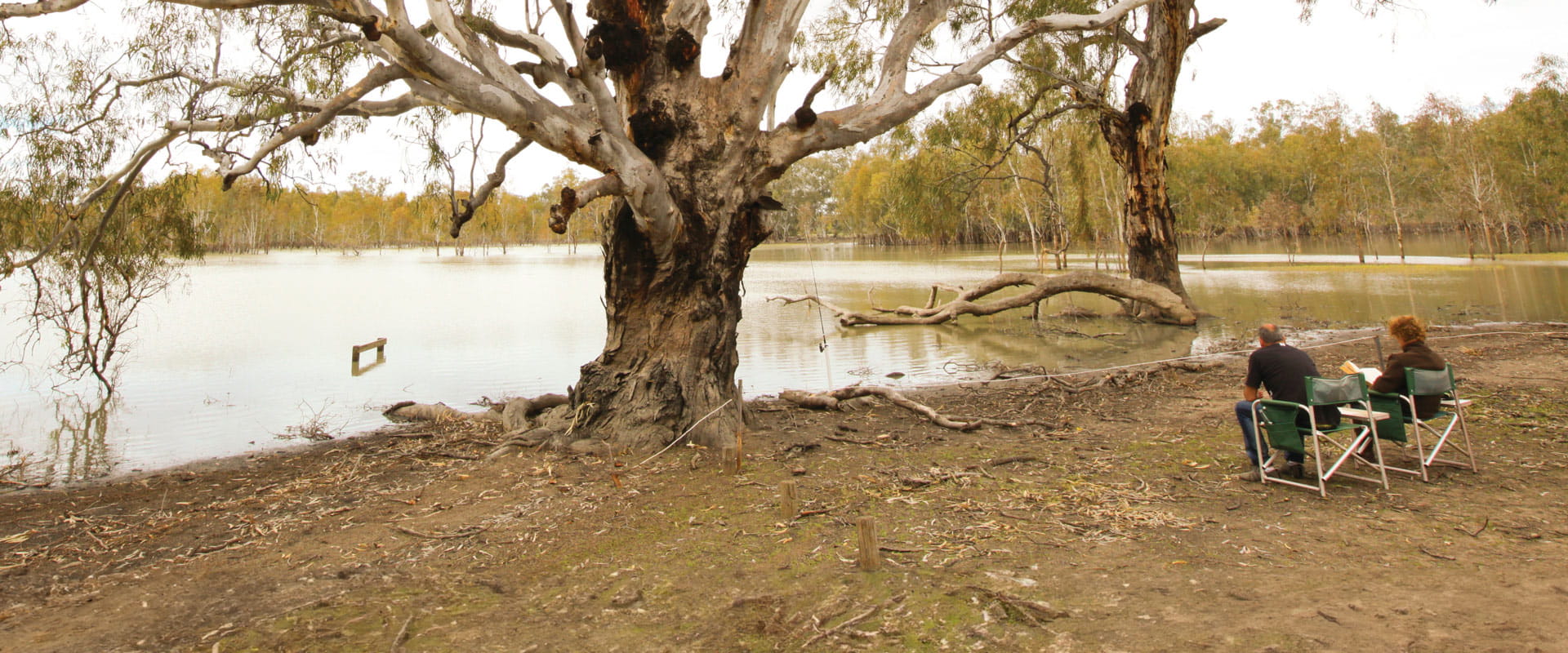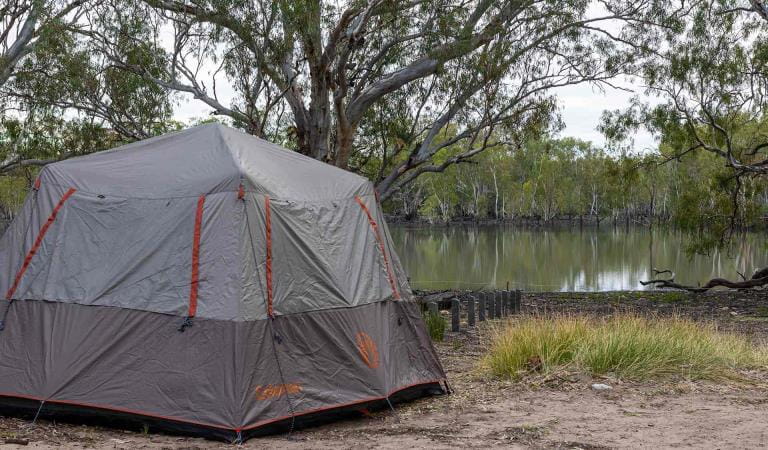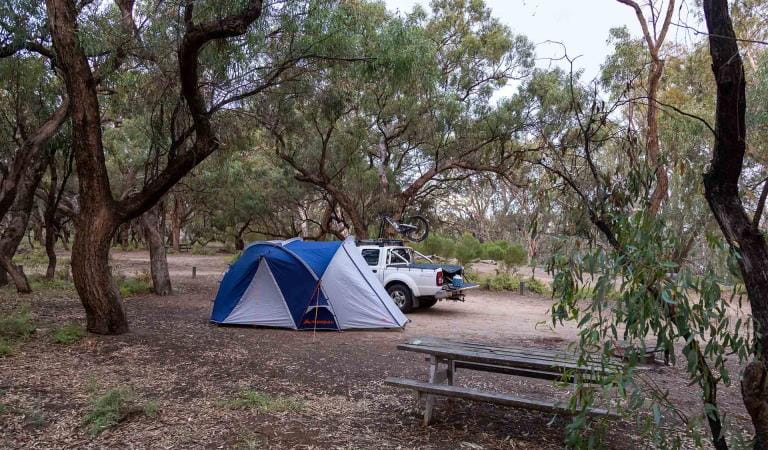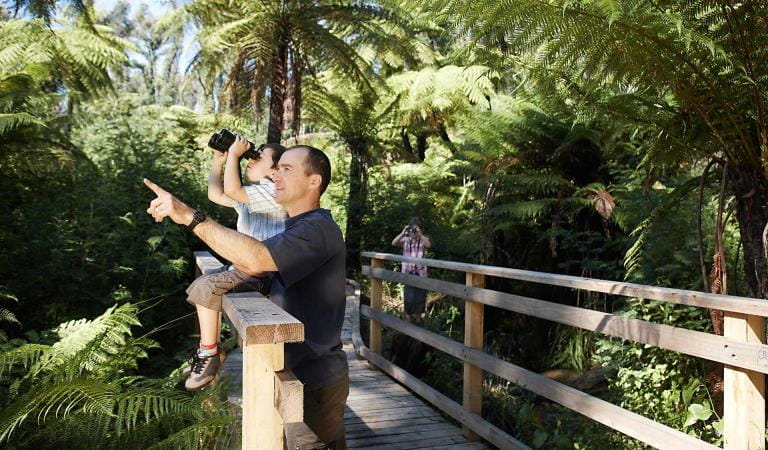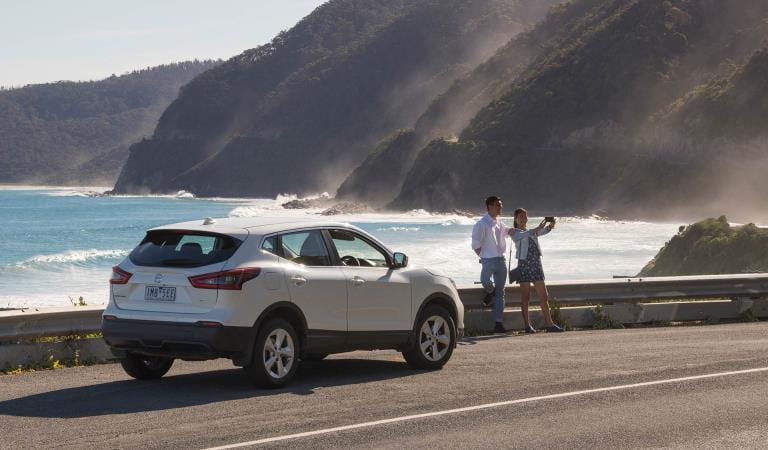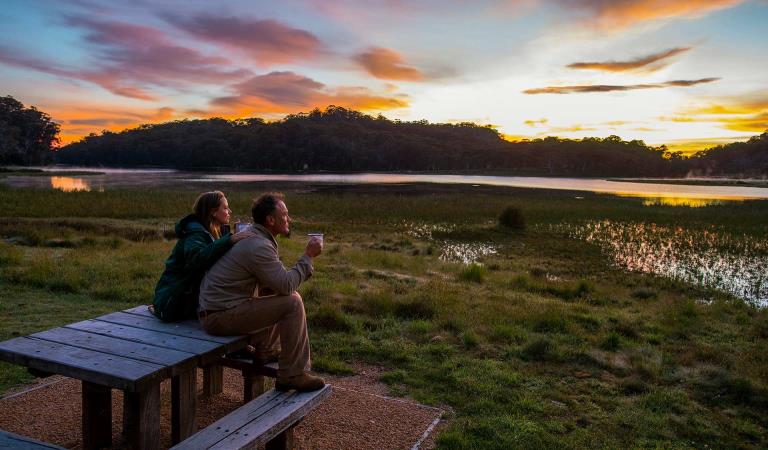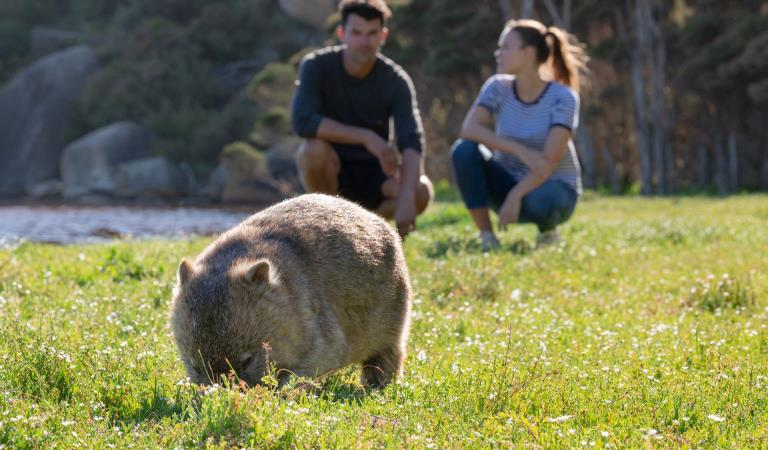Explore
Camping in Hattah-Kulkyne National Park
Hattah-Kulkyne National Park lies in typical mallee country with extensive low scrub and open native pine woodland. Superbly adapted birds, animals and vegetation thrive in the poor, sandy soils and searing summers.
There are two designated camping areas in the park with basic facilities, including non-flush toilets, fireplaces and picnic tables. They are at Lake Mournpall and Lake Hattah. Advance bookings and payment are required year round for camping at these sites.
Other river camping areas without facilities are available at Ki Bend, Firemans Bend and Jinkers Bend. No booking or fees are required.
Please practise minimal impact camping and observe relevant fire regulations. Beware of falling River Red Gum limbs when camping along the river.
Things to do in the area
Lake Hattah Camping Area
Lake Mournpall Camping Area
Bird watching
Long drives
Sunrises and sunsets
Wildlife viewing
How to get there
Camping in Hattah-Kulkyne National Park
Sites
When you're there
Need to know
Camping in Hattah-Kulkyne National Park
Accessibility
Change of Conditions
Nature being nature, sometimes conditions can change at short notice. It’s a good idea to check this page ahead of your visit for any updates.
-
Notices Affecting Multiple Parks
Partial park closure - Fire danger
The northern part of Hattah-Kulkyne National Park and adjacent Murray-Kulkyne Park are closed due to fire activity. The area to the east of Mournpall Tk is closed, including Goosefoot River Tk, Raak Tk, Eagles Nest Tk and the northern end of River Tk. Avoid travelling to fire affected areas and parks.Stay up to date with warnings and incidents via VicEmergency: emergency.vic.gov.auAttachments: Park closure form 20-01-26 to 26-01-26 Hattah-Kulkyne NP & Murray-Kulkyne Park (207KB)


